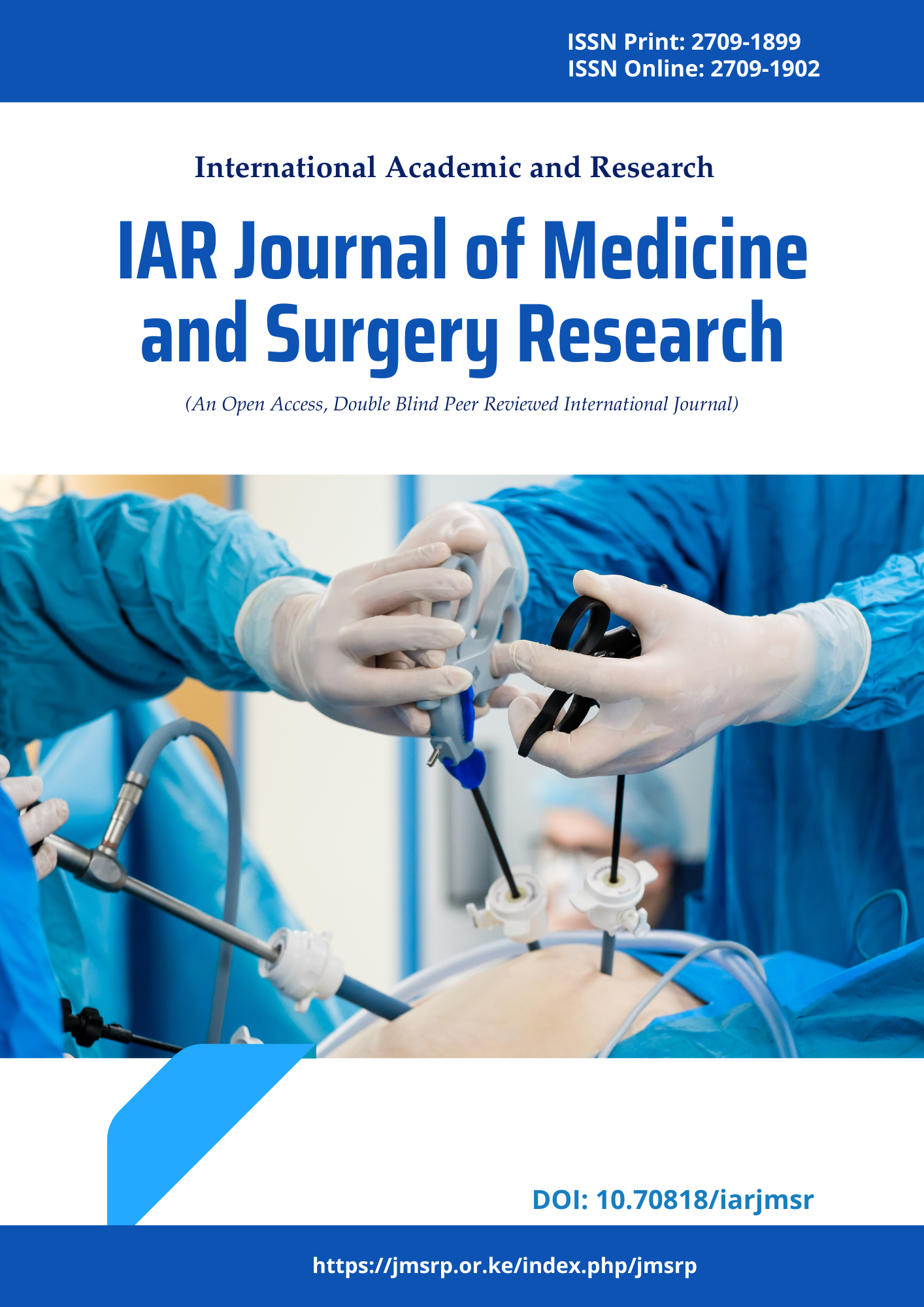Laser Management for Anal Fistulas: A Prospectivestudy
DOI:
https://doi.org/10.47310/iarjmsr.2021.V02i04.03Keywords:
Anal Fistula, Laser, Faecal Incontinence.Abstract
Introduction: Laser treatment for fistula-in-ano, also known as FiLaC (fistula laser closure) or LAFT (laser ablation of fistula tract), has gained increasing attention in the last decade. The procedure consists of delivering laser energy at 360° within the lumen of fistulas by means of a radial fiber which is slowly withdrawn from the external orifice. Material & Methods: The study analysed 40 patients treated for anal fistulae in Sapthagiri Institute of Medical Sciences, Bangalore between November 2020 to June 2021. Fistulae were classified in accordance with the Parks’ classification system, and all patients were preoperatively assessed by clinical examination and proctosigmoidoscopy and classified using three-dimensional (3D) endoanal ultrasonography performed by a sonographer experienced in endoanal ultrasound. Results: Of the 40 patients, 26 were female and 14 were male (overall median age 46 years; range 17–82 years). The median period of follow-up was 11 months, follow up was scheduled in the outpatient at 1 and 2 weeks and 1, 3, 6 and 11 months postoperatively. However, patients were instructed to return to the outpatient at any time should symptoms recur. In the cohort, 39 fistulae (97.5%) were cryptoglandular in origin and 1 (2.5%) were Crohn’s related. 97.5% had previously undergone surgery including abscess drainage and prior fistula operations. The mean number of operations before FiLaC treatment was 2.4 (±1.7) with a range of 1–9 previous operations. Discussion: The use of FILAC for the treatment of anorectal fistula has shown encouraging. The technique is easy to learn and fast to perform, allows exploration of curved paths and any size since the fiber is very flexible and long. The destruction of the epithelialized path and sealing is carried out by laser emission radially 360◦, thereby allowing the application of energy across the path homogeneous in a controlled manner. Conclusion: The FILAC, sphincter preservation minimally invasive surgery in the treatment of anal fistulas, looks promising although prospective and long-term follow-up studies should be conducted.
















